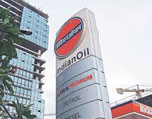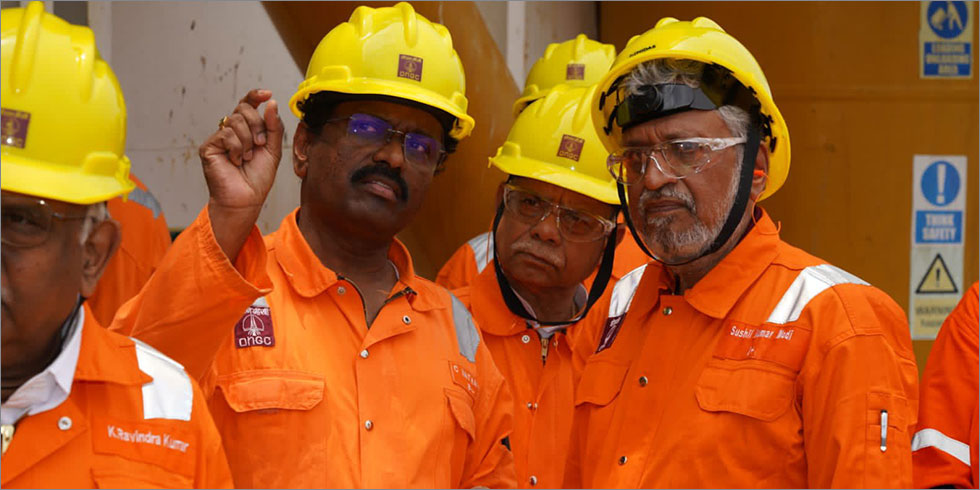Indian Oil Corporation, India’s largest oil refiner, is unsure how far petroleum products will drive its future. Numbers are still impressive for the integrated oil player. Sales turnover was a steep Rs 4,48,315 crore last fiscal.
Refineries ran full throttle at 99% capacity, churning in a throughput of 53.6 million tonnes. IOC’s pipelines network had a record throughput of 75.7 mt crude oil and petroleum products. To top it all, the state-owned firm sold 75.23 mt of petroleum products.
Still, IOC believes it has to bet big on gas to propel its future growth. B Ashok, IOC’s chairman, had indicated this at a recent press interaction. “Gas is certainly seen as the fuel of the future, with so much emphasis on environment…we would like to play an active role (in this sphere) in terms of providing customers with a fuel choice.”
More than green concerns, Ashok’s change of tack is grounded on market dynamics. The world is facing a refinery glut. About 20 refineries have shut shop in Europe in recent years, as more efficient refineries came up in Asia and the Middle East. Overcapacity is forcing refineries across the world to focus on exports, even if that meant wafer thin margins. Refineries in India produce far more than what the domestic market can absorb. Since 2001-02, India is a net exporter of petroleum products. In FY15 (until November 2014), the country had exported 43.14 mt of petroleum products, worth $37.28 billion. India is the largest exporter of petroleum products in Asia since 2009. Private players like Reliance and Essar are focused almost entirely on exports. IOC too thrives on exports to keep its machines in full run.
Amidst this glut, a redeeming feature is that demand is still good in India, thanks largely to a growing auto market.
Yet, last year, IOC saw just 1.7% growth in diesel sales. Petrol, though, managed to clock double-digit growth at 11.2%. IOC will now need to look at new products to lift its annual growth graphs, and gas marketing fits in perfect in this quadrant.
The company has already started moving in this new direction. It is in the process of setting up a 5-mtpa LNG terminal at Ennore in Tamil Nadu. It has also booked capacities at upcoming Dhamra terminal and existing Dahej to import LNG. The Maharatna firm has tied up with Japan’s Mitsubishi Corp to buy 0.7 mtpa of LNG from the Cameron LNG plant in Louisiana under a 20 year deal, with supplies beginning in early 2018. It will also also lift 1.2 mtpa for 20 years from Petronas’ British Columbia project beginning 2020. IOC made its first purchase of spot LNG from US major Excelerate Energy recently, for delivery in June.
By making aggressive plans in natural gas, the state-run oil refiner is pitting itself against another state-run firm, Gail, the country’s leading gas marketing and trading firm. Perhaps, the fuel retailer has an edge over the pure gas player here. Ashok proposes to have provisions for CNG (gas for automobiles) sales at its new retail outlets. With a 24,400-strong fuel station network, and about 900-1,000 new pumps added to it every year, it is easy for IOC to roll out CNG in a large scale. Though it is early days, IOC sold 3.42 mt of natural gas in FY15, a growth of 6% over the previous year.
Debasis Sen, director (planning & business development), sees the gas marketing evolving pretty well for IOC.
“Going ahead, demand from our refineries would also increase. Besides, there is plenty of potential available for marketing gas for industrial customers. There have we set our eyes. Whosoever used to be our liquid fuel customers in the past are now switching over to gas because of the economies it provides.”
The US Energy Information Administration estimates India’s natural gas consumption would increase by at least 1.5% every year in the decade 2010-2020.
IOC honchos feel that to make LNG affordable to users, the government has to speed up on laying gas pipelines and connect every corner of the country. Simultaneously, educating and incentivising small and medium scale industries to switch over to cleaner fuel is also required, they point out.
Petroleum minister Dharmendra Pradhan admits that the country can inch closer towards energy security, “if we move towards a gas-based economy”. But that’s easier said than done. Pipelines cannot be laid overnight, nor would consumers make a switch to natural gas so easily. However, with the fall in prices of LNG, demand could start climbing up, aided by the recent enabling government policies such as using LNG for stranded power plants and the fertiliser pooling mechanism.
Indian Oil Corporation betting on gas to fuel its future growth








Add Comment